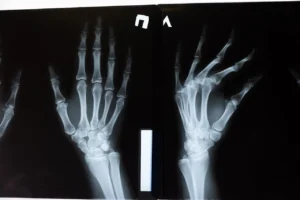
The thirty-seventh meeting of the Emergency Committee under the International Health Regulations (2005) (IHR) on the international spread of poliovirus was convened by the WHO Director-General on 12 December 2023 with Committee members and advisers meeting face to face, and via video conference with affected countries, supported by the WHO Secretariat. The Emergency Committee reviewed the data on wild poliovirus (WPV1) and circulating vaccine derived polioviruses (cVDPV) in the context of the global target of eradication of WPV and cessation of outbreaks of cVDPV2. Technical updates were received about the situation in the following countries: Afghanistan, Egypt, Guinea, Mauritania, Nigeria, Pakistan and Zimbabwe.
Wild poliovirus
There have been four new cases of WPV1 in Pakistan since the last meeting, bringing the total to six in 2023. Furthermore, there has been a large increase in environmental detections, with 60 positive samples found in the three months from September to November, bringing the total in 2023 to 82. After a period of non-detection, new transmission is occurring in the Quetta Block in Balochistan, in Karachi in Sindh, Islamabad / Rawalpindi and in Peshawar in Khyber Pakhtunkhwa (KP) province. Although implementation of a polio action plan in southern KP has resulted in 160,000 more children being vaccinated, the context remains challenging: political instability, insecurity in some areas, with front line workers requiring police patrols to accompany them, and vaccination boycotts where communities make demands for other services in exchange for allowing polio vaccination. The programme continues to miss a significant number of children in Pakistan.
Since the last meeting, there have been no new WPV1 cases reported from Afghanistan, where the total number of cases remains six, all from Nangarhar province. However, there have been 46 WPV1 positive environmental samples to date in 2023, mostly from the endemic East Region (Nangarhar and Kunar provinces), but recently also in environmental samples from Kabul, Kandahar, Zabul and Balkh provinces.
This indicates spread of WPV1 from the endemic zones of Afghanistan (East Region) and Pakistan (South KP) and is a reversal of recent progress. The programme is implementing high quality campaigns and reaching more children than ever before, but the quality will have to be increased further and sustained. Any setback in Afghanistan poses a risk to the programme in Pakistan due to high population movement.
Afghanistan continues to implement an intense campaign schedule, focusing on improving quality in the endemic zone and timely response to WPV1 detections elsewhere in the country. Quality improvement interventions in the East Region include microplan validation, enhancing engagement of female vaccinators, social mobilizers and monitors, intensified and well-supervised trainings of the polio health workers, intensified monitoring, using polio campaign microplans to accelerate routine immunization and expanding the campaign-target age group up to 10 years in the areas that were inaccessible prior to 2021. While the campaign-quality in the East Region has improved in 2023, there are continued challenges in the South Region where almost 200,000 children remain unreached during the campaigns and quality is sub-optimal as indicated by the lot quality assurance sampling (LQAS).
The recent major increase in the number of Afghan returnees from Pakistan has compounded the humanitarian challenges in Afghanistan. The country received close to 0.3 million Afghan returnees from mid-September to mid-November and the expected total number of returnees is 1.7 million. This massive population movement significantly increases the risk of cross-border poliovirus spread as well as spread within the two countries. The polio programme in Afghanistan has activated a contingency plan and deployed additional teams and supervisors in critical areas and routes to vaccinate the children in the returnee populations. Close coordination is being maintained with UNHCR and IOM for vaccination at their centres and for information sharing. Districts with significant influx of returnees will be included in the upcoming polio vaccination campaigns.
It has now been more than 15 months since the WPV1 detection in south-eastern Africa, with the last case having onset of paralysis on 10 August 2022 in Mozambique, and it has been two years since the single case was detected in Malawi. The Committee noted that the GPEI carried out independent outbreak response assessments (OBRA’s) in Mozambique and Malawi in November 2023. In Mozambique, there are promising signs that the transmission of imported WPV1 in Mozambique has stopped. However, a full 12 months of finalized surveillance data was not yet available. In Malawi, the OBRA team concluded that the WPV1 transmission in Malawi has most likely stopped. However, the WPV1 outbreak will only be considered as closed once a similar conclusion is reached for Mozambique. Formal closure of the outbreak will be by the WHO Regional office following endorsement of the Regional Certification Commission.
Circulating vaccine derived poliovirus (cVDPV)
The number of cVDPV2 cases is declining and the geographic concentration is more focused, with a modest reduction in the number of infected provinces and districts. In 2023 to date, there have been 374 cases confirmed with cVDPV, of which 265 are cVDPV2 and 109 are cVDPV1. Of these 374 cases, 191 (51%) have occurred in the DR Congo. Globally 72% of cases are in the four most consequential geographies (eastern DR Congo, northern Nigeria, northern Yemen and Somalia). There are also decreasing numbers of new and circulating emergence groups. Despite the ongoing decline in the number of cVDPV2 cases and the number of lineages circulating, the risk of international spread of cVDPV2 remains high. Evidence of this includes the high transmission in DR Congo with recent spread of cVDPV2 to Tanzania, and new emergences in Zimbabwe and Egypt, and re-infection of Guinea and Mauritania. Zimbabwe itself has never used the vaccine, so the detection indicates an importation of PV2 from an unknown source.
The Committee noted that in the African Region, which now uses novel OPV2 exclusively, there have been a total of 10 new cVDPV2 emergences detected that have emerged from novel OPV2 use, while there has been one such emergence identified in Egypt in the Eastern Mediterranean Region. The detection of nOPV2-derived VDPV2 strains is an expected finding with increased nOPV2 use. The vaccine nOPV2 continues to demonstrate significantly higher genetic stability and substantially lower likelihood of reversion to neurovirulence relative to Sabin OPV2. Since first use in March 2021, approximately 821 million doses of nOPV2 have been administered in the African Region. It is estimated that the 10 emergences from AFR represent an 82% lower risk of emergence by nOPV2 than Sabin OPV2 in the African Region.
Overall, there has been a trend toward fewer but bigger campaigns. An OPV supply disruption contributed to reduction in campaign activity in the first quarter of 2023 but supply is now sufficient. Timeliness of response is a challenge; over the past 18 months, only 29% of campaigns met the target of implementing the first campaign within 28 days of outbreak confirmation.
The emergence and ongoing transmission of cVDPV1 in Madagascar, DR Congo and Mozambique is of concern as it highlights gaps in population immunity to type 1 polioviruses including WPV1 in the sub-region. Of the 426 children reported in 2023 with paralysis due to cVDPV, over a quarter are confirmed due to type 1. Furthermore, this gap in population immunity poses a major risk for WPV1 importation and further spread, putting the global eradication target at risk.
The Committee noted that much of the risk for cVDPV outbreaks can be linked to a combination of inaccessibility, insecurity, a high concentration of zero dose children and population displacement. These factors are most evident in northern Yemen, northern Nigeria, south central Somalia and eastern Democratic Republic of the Congo, but also in northern Mozambique, Burkino Faso and Mali. The instability in West Africa and the Sahel region, most recently in Niger was especially concerning, as the risk of polio program disruption was particularly high.




